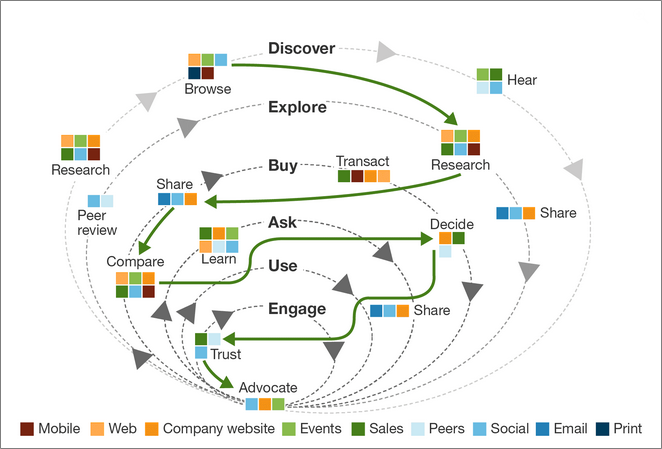Marketing Investments to Drive Revenue in 2024
There are a lot of opportunities to improve your company’s marketing, like accessing new information, improving your processes, or implementing...
3 min read
 Paul Groessel
:
August 10, 2023
Paul Groessel
:
August 10, 2023
What can you do right now to improve your marketing ROI?
Inbound marketing and content marketing are investments toward long-term revenue growth, but that doesn’t mean you can’t earn some immediate marketing success.
Short-term marketing wins refer to immediate or quick successes achieved in marketing campaigns or strategies. These wins are usually measurable and can have a positive impact on key performance indicators (KPIs) in a relatively short period of time. While long-term marketing strategies are crucial for sustainable growth, short-term wins are essential for maintaining momentum, generating revenue, and keeping stakeholders satisfied.
Here are some short-term marketing improvements you can make right now at every step of the customer journey.
Content marketing is all about providing your potential customer's resources to help fulfill their hero’s journey–that’s different from writing about all of the things that make your company great. Make sure you have content on your website that helps your audience fulfill their needs.
If your website doesn’t have a web page for every product, service, or key component of your business, you’re simply missing out on potential customers. When your potential customers are ready to buy, make it easy for them to see their solution on your website with clear navigation.
First Step: Scan your website pages–do the titles reflect everything your business offers? Are those pages easy to find?
Know your customers' journey from problem recognition to investing in a solution. Help them address hurdles like lack of information, time, resources, and company buy-in. Create tailored content, including FAQ sections, blogs, web pages, campaigns, and guides, catering to different personas at each step.
First Step: Ask your customer-facing departments about frequently asked questions and common issues customers face. Identified FAQs can be used for blogs and online resources.
Google Search Console is a powerful, free tool.
Search Console will tell you how your webpages are performing on Google Search and your websites’ keyword performance.
When you’re identifying new SEO-friendly content opportunities, start with the keywords and pages that are performing well. Create new content and update old content that builds on keywords and pages that are already working. Don’t start writing content on topics you’re not getting any organic traffic from.
First Step: Connect Google Search Console to your website (if it’s not already).
Next Step: Use one month to six months of data to identify what keywords are performing well. Create a list of new blog or content opportunities around those high-performing keywords.
Are you using "Contact Us" as your primary call to action (CTA) on your website?
Offer more than just a "Contact Us" CTA on your website. Implement CTAs tailored to each stage of the buyer's journey, such as "Read More," "Download The Guide," or "Schedule a Free Consultation."
First Step: Create a list of possible CTAs by stage in the buyer’s journey.
Are you segmenting contacts on your website forms? Along with basic contact information, website forms should capture the sales cycle stage and service/business category. It might be obvious in the comment field they fill out, but to organize your contacts and leads, you’ll need to gather information in an organized way.
Add custom fields to your forms so you can make lead nurturing tailored to your contacts for a better experience and better sales conversions.
First Step: Identify forms that need to capture additional information for contact segmentation.
Lead nurturing requires a lead management system. Building out that system is a long-term process. Getting started can provide short-term marketing and sales opportunities.
In order to have a solid plan for managing leads, it is crucial to create a lead management map. This map will provide clear guidance for your marketing and sales team, ensuring that everyone knows where leads are coming from and what steps to take at every stage of the marketing and sales process.
In the short-term, have you identified when the marketing team should hand off leads to the sales team? This is the crux of any lead management map, and the conversation can result in eye-opening opportunities.
First Step: Start a conversation with your sales team about when most leads are ready for sales conversations and when they’re not.
Leverage a CRM like HubSpot to track website and contact engagement, allowing you to identify potential sales-qualified leads based on actions such as email activity, content downloads, and website visits.
Without a CRM, tracking contact engagement and lead quality becomes challenging.
First Step: Leverage the data on contact engagement with your website, content, emails, and offers to compile a list of potential leads for direct contact by your sales team.
While short-term marketing wins can be beneficial, it's crucial for businesses to strike a balance with long-term inbound marketing strategies that focus on creating processes and sustained growth. Combining both short-term and long-term strategies can create a well-rounded marketing strategy that yields both immediate and enduring results. It requires collaboration. It’s what our Discovery process is all about–a proven process that helps you avoid pitfalls of strategic planning.

There are a lot of opportunities to improve your company’s marketing, like accessing new information, improving your processes, or implementing...

Many manufacturers with smaller marketing departments prioritize sales support: creating sales collateral, helping with trade shows, developing...

“If you’re going to do something right, do it right the first time.” My grandpa said this. He wasn’t a writer. A good man, a great man – but not a...